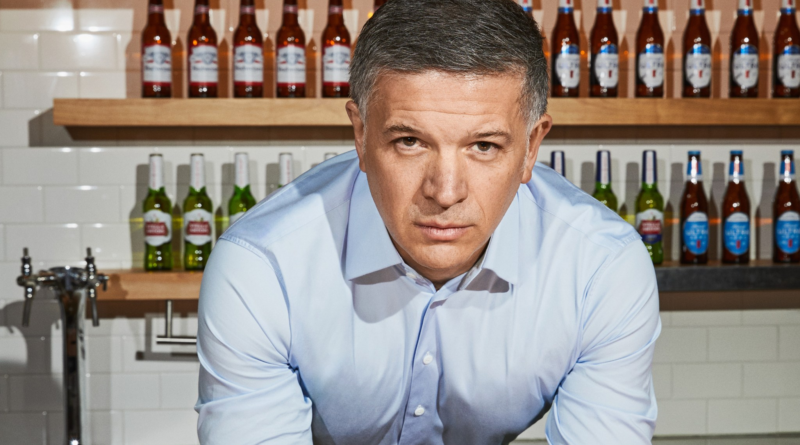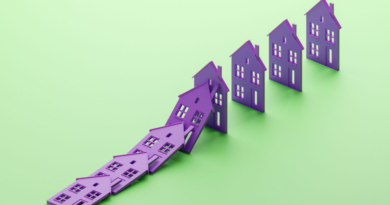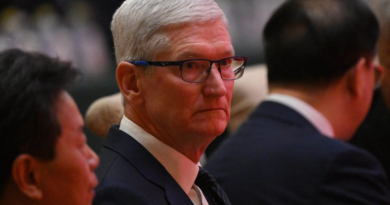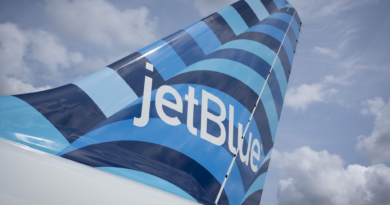Gen Z are drinking less than their parents. The CEO in charge of Bud Light and Michelob is betting on nonalcoholic beer to woo them back
During a recent invite-only seminar at Harvard Business School, a group of CEOs were asked to imagine the four crises they would likely confront during their average tenure at the top: a health emergency, a geopolitical conflict, an economic downturn, and a trade war.
For one participant in particular—Michel Doukeris, the CEO of the world’s biggest brewer, Anheuser-Busch InBev—the list hit home. “So, according to your research, I’m ready to retire,” he recalls telling the Harvard professor. “Because I have seen all that in the first two years.”
Doukeris had been promoted in July 2021 to lead AB InBev (as the brewing giant is known). It was a baptism by fire, beginning at the height of the COVID pandemic, when millions of drinkers were under lockdown, or avoiding drinking in crowded bars. Then came Russia’s invasion of Ukraine, spiraling inflation across the globe, and deepening trade disputes between the world’s two biggest economies, the U.S. and China. And as if all that was not enough: Last year, large numbers of Americans launched a boycott against Bud Light—one of AB InBev’s most iconic and bestselling beers—after the company hired transgender actress Dylan Mulvaney to promote it on TikTok. The backlash briefly drove AB InBev’s stock down 20%, while the company estimated the boycott might have cost it about $1.4 billion in U.S. sales.
Raised in a small city in southern Brazil, Doukeris is a lifer. He joined the company at 23 with degrees in chemical engineering and marketing, and built his early career expanding its markets in Latin America, before being sent to China to oversee Asia operations. At 51, Doukeris has no stated plans to retire (despite what he told the Harvard professor). But he says he gleaned an important insight in the seminar: Upheaval is the new normal for most businesses. “Change is coming much faster,” he says, sitting one rainy morning in AB InBev’s office in Brussels, overlooking the Belgian capital’s cobblestone square, with its soaring 16th-century City Hall. “The cycles are shorter than what they used to be.”
For AB InBev, the churn has lately been challenging. The company brought in $59 billion in revenues last year, but its size has not shielded it from economic gyrations. While third-quarter earnings grew 2.1% over the same period last year, beer sales fell about 3.1% by volume, thanks largely to economic woes in China, where revenues sank 16% in just three months. “People are going less to restaurants and bars,” Doukeris told analysts, describing the problems in China—a country where he lived for seven years, cementing his reputation among brewers.
The company he leads is a sprawling portfolio of beer brands, a result of having acquired numerous beermakers in South Africa; Saint Louis, Mo. (home of Budweiser and Bud Light); Brazil and elsewhere. (It’s headquartered in the old brewing town of Leuven, Belgium, 17 miles east of Brussels.) AB InBev’s merger in 2016 with SABMiller made it the world’s biggest brewer, ahead of Heineken of the Netherlands and Denmark’s Carlsberg, with about 500 beers in production, including global brands like Michelob, Corona, and Stella Artois.
While AB InBev is publicly traded on the Belgian and New York stock exchanges, about half the company is owned by a small group of Brazilian and Belgian shareholders, who exercise crucial influence over its direction. “They are very much behind the scenes,” says Trevor Stirling, beer analyst at Bernstein in London. “For these shareholders, this is their family heritage.”
With AB InBev breweries across 50 countries, Doukeris, who shuttles between the company’s main offices in Belgium and Manhattan, is grappling with problems far broader than China. Some of those are outlined across eight pages in the risk assessment in the company’s annual report: “Difficult macroeconomic conditions” are a major theme.
By Doukeris’s admission, the beer industry faces challenges far bigger than economic uncertainty—some of which might last far longer. Perhaps most worrying is that younger generations are drinking far less than their parents did—a change fueled in large part by greater health consciousness. Among those younger than 34, the share that say they ever drink alcohol has dropped from 72% to 62% since 2000, and only 40% drank regularly, according to a Gallup study last year.
Lean and soft-spoken, Doukeris is a prime example of that health consciousness (though not a teetotaler). The day Fortune met him in Brussels at 9 a.m., he had woken at 5:30 a.m., and exercised for 85 minutes, including a 35-minute treadmill run in his hotel gym—all tracked by the Oura ring he wears on his finger. He says he is in bed nightly “at 9 p.m., no later ever, and most times earlier. You need that to perform.”
His own performance may ultimately be judged by how well he competes in one of the fastest-growing segments of the global industry: Non-alcoholic beers. In fact, AB InBev’s future growth might depend heavily on marketing those beers. That’s a sharp difference from the 2010s, when the company expanded rapidly through acquisitions. “In the last five or six years the directors realized there was no one left to buy,” says Stirling. “They realized if they wanted to create value, they had to reorient the business.”

Kenzo Triboulliard—AFP/Getty Images
Doukeris says that zero-alcohol beers have gone from being a niche product sold largely in Europe to “an everywhere type of growth.” His strategy for growing that market rests on his preference for much longer-term planning than that of many Western CEOs—a practice he says he learned from his years living in China, when he watched Asian companies set business targets decades out. Doukeris says he’s thinking in terms of “a 10-year plan.” “If you think about non-alcohol beer as it was two years ago, maybe one would not invest,” he continues, “but because we are projecting 10 years down the road, we decided to invest globally. We developed the technology, which is pretty neat.”
‘We need to make no-alcohol beer taste like beer’
The technology has been the focus of a long, arduous effort within AB InBev. That much is clear inside the company’s headquarters in Leuven, a town where monks first began brewing beer more than 600 years ago, fermenting hops with water from the polluted river running through town in the belief that the drink made the fish from the water safer to eat.
Today, a strong yeasty aroma still wafts over parts of Leuven, now emanating from AB InBev’s giant facility on the riverfront. Inside the gates are vast halls with stainless steel fermentation tanks, and a sprawling tangle of 10 conveyor belts, where more than 8.5 million bottles and millions more cans zip by in a blur every day, 24/7.
But the heart of the operation is located in a quieter corner of the complex: The Global Innovation and Technology Center, or GITEC. For 14 years, AB InBev’s engineers have worked here with the aim of creating a formula for zero-alcohol beers whose taste is virtually indistinguishable from alcoholic versions. AB InBev’s innovation chief, David De Schutter, says that when he arrived in Leuven in 2010 to oversee GITEC, he was given strict orders: “We need to make no-alcohol beer taste like beer,” he remembers execs telling him. “That’s the mission. Do whatever you need to do, but you need to achieve it.”
Non-alcohol beers are hardly new; the U.S. sold several during the Prohibition era nearly a century ago, including ones produced by Anheuser-Busch. But previous attempts at no-alcohol beers by major brewers had resulted in drinks that tasted burned or cooked, or had a cloying aftertaste, and which lacked the heady aroma of real beer. They were either brewed too hot, in order to remove the alcohol, or with fermentation times too short to recreate beer’s distinctive smell and consistency. “They tasted quite vile, to be honest,” Stirling says.
By the 2010s, brewers were engaged in an all-out race to create the first mass-market zero-alcohol beers, and making headway on the flavor front. The industry’s first big breakthrough came when Heineken launched a zero-alcohol version in 2017, ramping up the competition among others. They still represent a tiny fraction of total beer sales, but since 2018, their sales have grown more than 10 times as fast as those of alcoholic beers.
It took AB InBev another three years to release Budweiser Zero, its first non-alcohol version of a big brand. It was the culmination of a huge effort: De Schutter says the work involved researchers at several Belgian universities, as well as at Oregon State University. Engineers experimented with sugars and enzymes, tweaking the formula so that beer could be brewed at low enough temperatures to retain their flavor and smell; AB InBev also developed its own technology to mimic beer smells.
The company declines to share its growth projection for non-alcoholic beers, which it says currently comprise a “low single-digit” percentage of sales. AB InBev says it now has about 20% of the global non-alcoholic beer market (based on outside estimates of the size of the market, that would amount to around $2.6 billion in revenue). It has 28 brands, from Budweiser Zero to its latest release, Corona Cero (the Portuguese word for zero)—which made its splashy debut at the Paris Olympics last July.
That special formula, meanwhile, now sits in AB InBev’s top-secret “global yeast bank,” a refrigerated room housing more than 2,000 yeast cultures in sub-zero temperatures, some dating back decades. Each culture is unique to a particular beer, so that it can be flown to any of the company’s 260 breweries across the world, ensuring that any given brand can be produced with the identical taste, no matter where it is sold. Fortune was given a very rare tour of the facility, but without the CEO—regular access is permitted for only four staff members, and Doukeris is not among them.
A 10-year plan, with much uncertainty ahead
Doukeris, who says he drinks a variety of beers several times a week, has a long-range view of the market that’s more hopeful than the more immediate one. The weekend I met him in Brussels, he had flown in from New York for Belgian Beer Weekend—a blow-out annual fair, celebrating one of the country’s oldest traditions, with the large central square turned into a crowded, open-air beer hall with hundreds of drinks on offer.
Inside the Medieval City Hall on the square, the country’s trade association, Belgian Brewers, held an ornate ceremony, where beermakers in red robes trimmed with fur marched solemnly through a hall hung with old tapestries, and later bestowed a knighthood on Doukeris.
The romantic trappings couldn’t dispel the financial worries, however. “We won’t beat around the bush,” the organization’s president, Bernard Deryckere, told the audience of brewers and government officials. Beer companies, he said, had been hit hard by “spiraling inflation, rising labor costs and increased taxes,” and several had been forced out of business.
For Doukeris, the task ahead is shielding AB InBev from the maelstrom—a task, he says, made easier by him focusing on the longer-term horizon. “When you project the world in 10 years, you understand things are very low today,” he says. “But the compounding effect of 10 years: That represents the real opportunity.”




